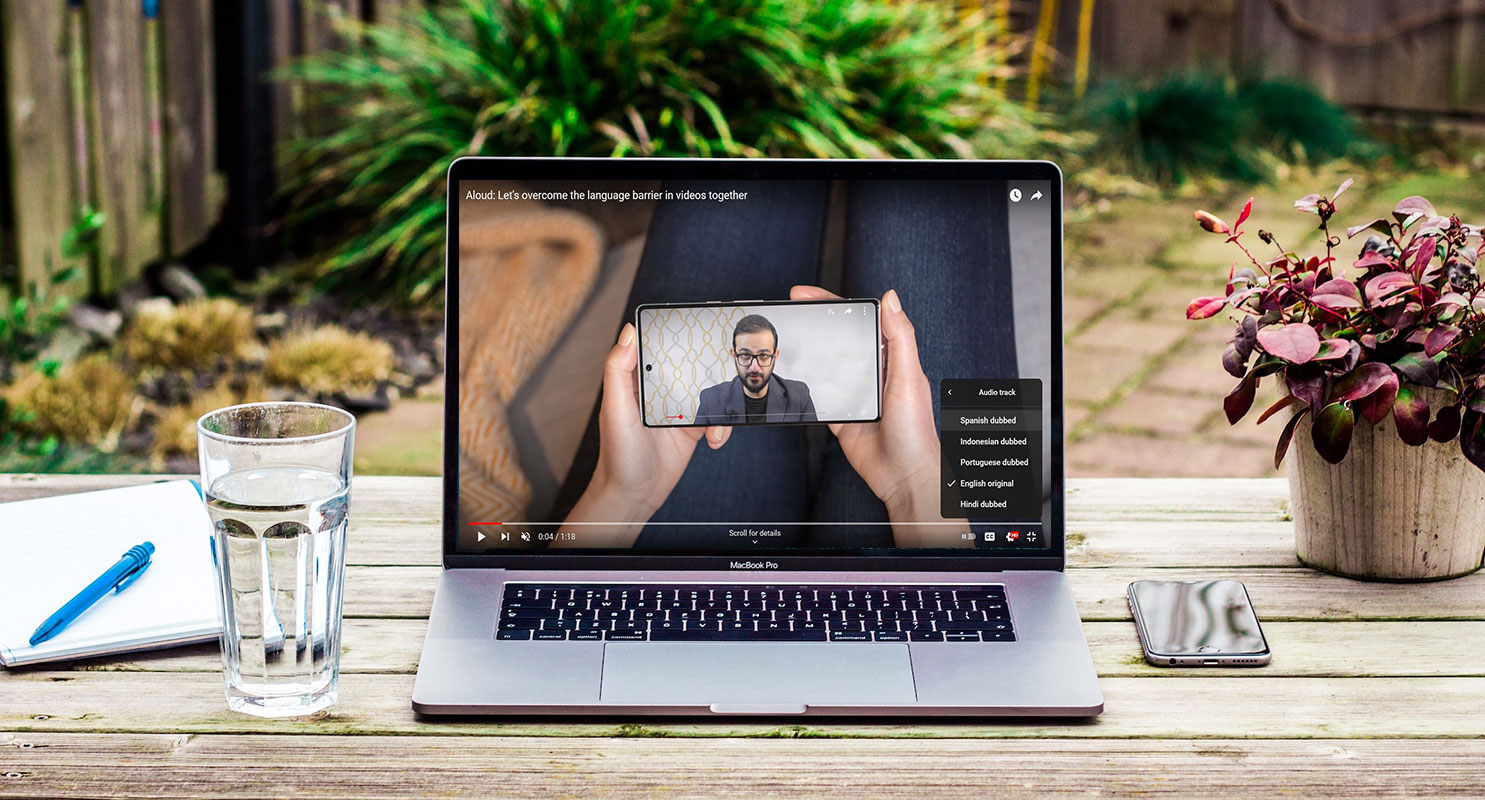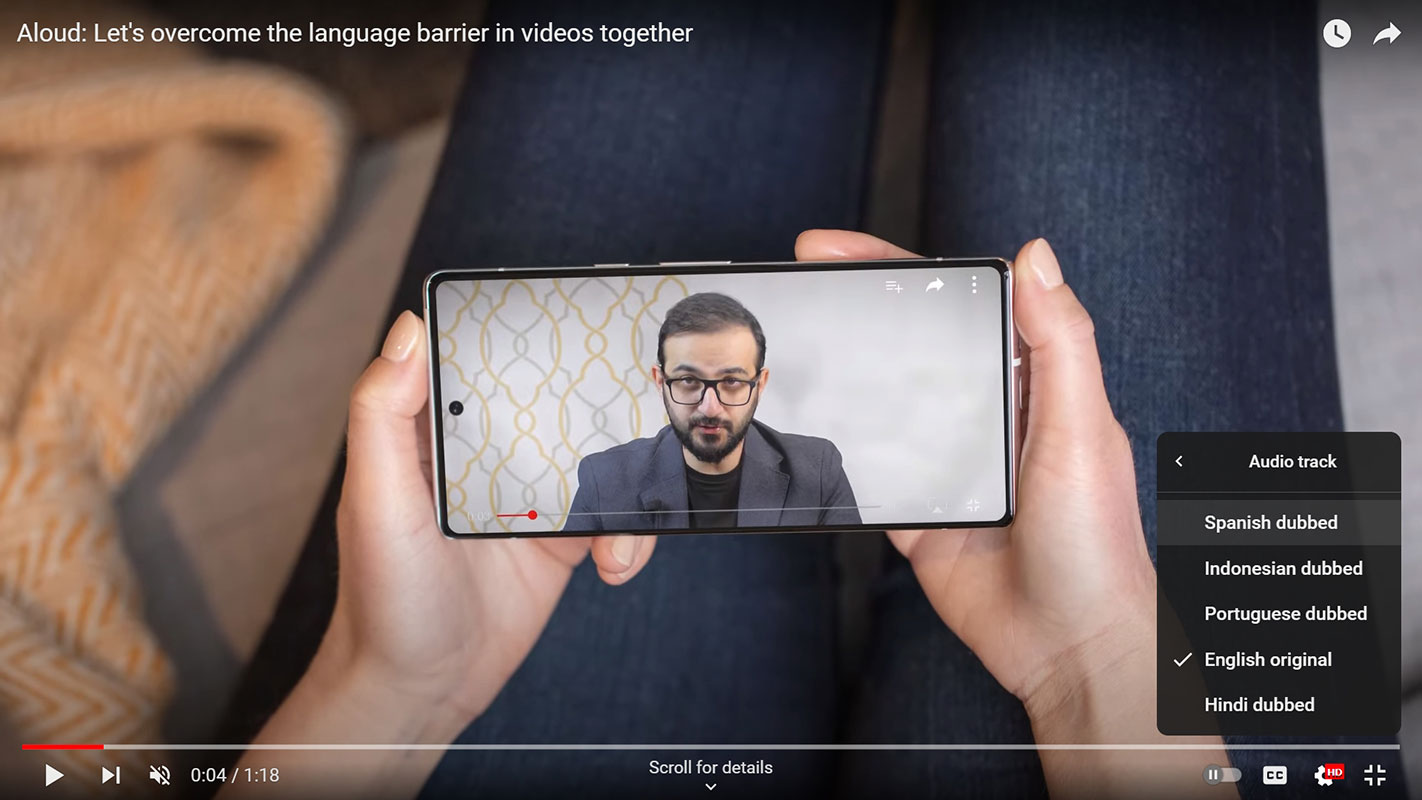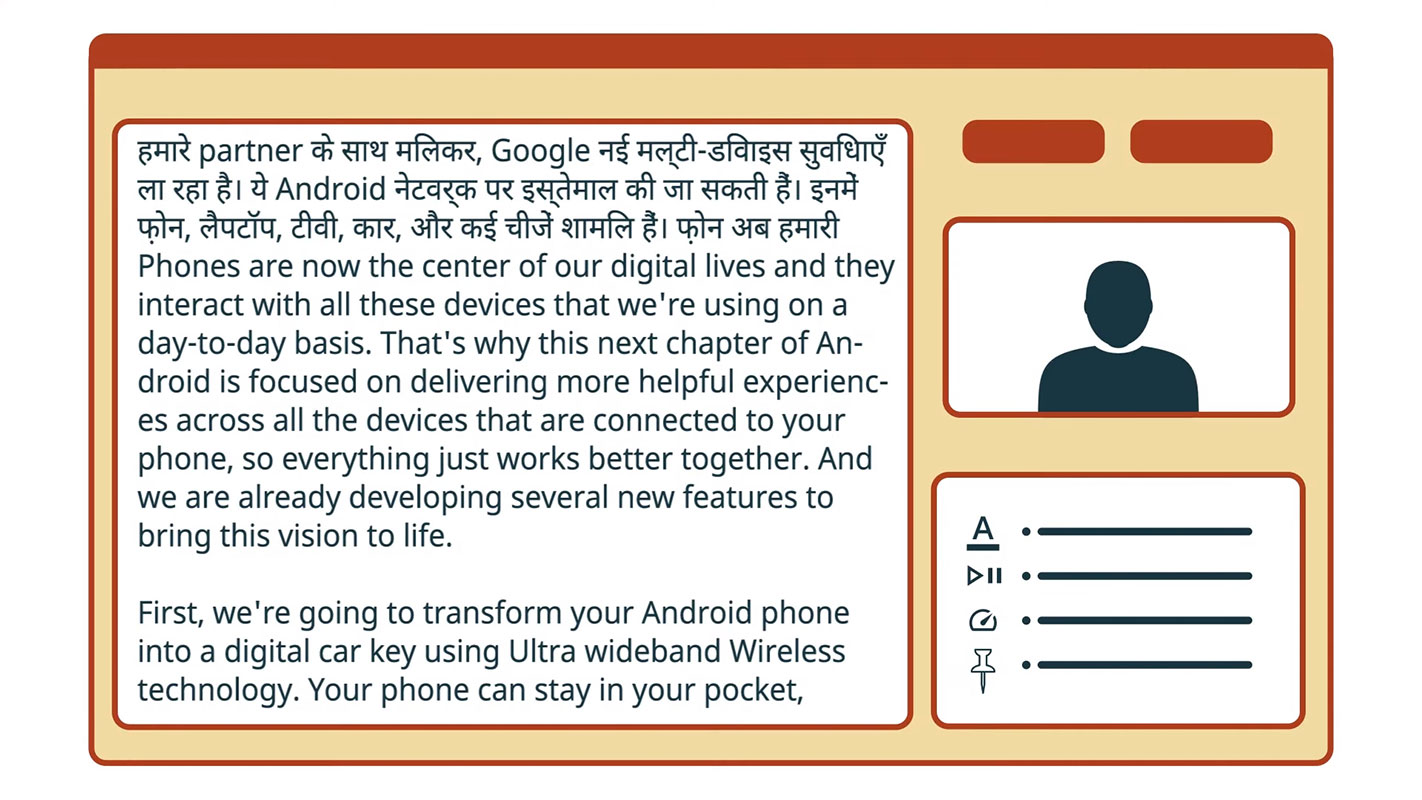To make video dubbing more accessible, user-friendly, and efficient, YouTube has taken a significant step towards utilizing the power of artificial intelligence (AI). In collaboration with Aloud, an AI-powered dubbing service developed within Google’s Area 120 incubator, the video-sharing platform has taken a significant step forward in bridging the language barrier. Through this partnership, YouTube is working to streamline the process of dubbing videos in different languages and make it easier for creators across the platform to create content in multiple languages. By leveraging AI technology, the objective is to simplify the dubbing process and make it more efficient, thus reducing the workload required to dub videos in different languages.

How Does the AI Dubbing Tool Works?
The Aloud AI dubbing tool follows a straightforward process to help creators translate and dub their videos effectively. It all begins with a transcription of the original video. The tool automatically generates a transcription, which creators can review and edit as needed. This transcription serves as the foundation for the subsequent translation and dubbing process.
Once the transcription is finalized, the tool proceeds to translate the content into the desired language. It then utilizes advanced AI algorithms to produce a high-quality dub closely matching the original audio. This powerful technology ensures that the translated dub aligns seamlessly with the video, creating a cohesive viewing experience for audiences of different languages.
Testing and Availability
YouTube is actively testing the Aloud AI dubbing tool with a select group of creators. According to Amjad Hanif, a representative from YouTube, the tool is currently being tested by “hundreds” of creators. This testing phase allows YouTube to gather valuable feedback and refine the tool’s functionality before a broader release.

At present, Aloud supports a limited number of languages. However, YouTube has plans to expand the range of supported languages in the future. As confirmed by Jessica Gibby, a spokesperson for YouTube, Aloud is currently available for dubbing videos in English, Spanish, and Portuguese. This availability showcases YouTube’s commitment to catering to a diverse global audience and enabling creators to connect with viewers from different linguistic backgrounds.
Benefits for Creators
Introducing the Aloud AI dubbing tool brings several significant benefits to creators on YouTube. One of the primary advantages is the facilitation of multi-language dubs. With the increasing globalization of online content, many creators strive to reach broader audiences by offering their videos in multiple languages. Aloud simplifies this process by automating the transcription, translation, and dubbing steps, saving creators valuable time and effort.
You can listen to an example of its results to understand Aloud’s capabilities. The Amoeba Sisters channel features a Spanish dub track in one of its videos, showcasing the effectiveness of the AI-powered dubbing service. To access the dub, click the gear icon and select “Audio track.”
Future Improvements

YouTube is committed to continuously enhancing the Aloud AI dubbing tool. Amjad Hanif reveals that YouTube is improving translated audio tracks to sound like the creator’s voice. This enhancement will add further authenticity and expression to the dubbed content. Additionally, YouTube aims to refine lip sync capabilities, ensuring that the translated audio aligns seamlessly with the video’s visuals. As stated by Jessica Gibby, these exciting features are expected to be implemented by 2024.
The Project’s Availability and Affiliation with Google’s Area 120
The Aloud AI dubbing tool is currently available as a project under Google’s Area 120 incubator. Area 120 is known for fostering experimental features and innovative projects within Google. As a result, the Aloud project benefits from the expertise and resources of this prestigious incubator, ensuring that creators receive a cutting-edge dubbing tool that meets their needs.
FAQs
Can I now use the Aloud AI dubbing tool for my YouTube videos?
The Aloud AI dubbing tool is still in the testing phase with a limited group of creators. YouTube is actively gathering feedback and refining the tool’s functionality. However, YouTube has plans to make the tool available to a broader audience in the future.
Which languages does the Aloud AI dubbing tool support?
The Aloud AI dubbing tool currently supports English, Spanish, and Portuguese. However, YouTube intends to expand the range of supported languages over time, enabling creators to dub their videos in various languages.
How accurate is the transcription generated by the Aloud AI dubbing tool?
The Aloud AI dubbing tool utilizes advanced AI algorithms to generate transcriptions. While the tool strives for accuracy, it’s always recommended that creators review and edit the transcription as needed to ensure its correctness.
Can I listen to a sample of Aloud’s results?
Certainly! The Amoeba Sisters channel on YouTube features a video with a Spanish dub track generated using the Aloud AI dubbing tool. To listen to the dub, click the gear icon while watching the video and select “Audio track.”
When can we expect the improved voice matching and lip sync capabilities to be available?
YouTube aims to implement improved voice matching and lip sync capabilities by 2024. These features will enhance the authenticity and visual coherence of the translated audio tracks. It can provide an even better viewing experience for audiences.
Wrap Up
YouTube’s collaboration with Aloud has brought to light an AI-powered dubbing tool. It is capable of simplifying the translation and dubbing of videos for creators. Currently, Google tested with a select group of creators. This tool automates multiple steps, such as transcription, translation, and dubbing, making creating content for broader audiences more accessible and achievable. The tool’s capabilities are such that even those who aren’t native speakers of the target language can now create content quickly. These aspects are streamlined and automated.
With future improvement plans, YouTube intends to build on these features. They will roll out enhanced voice matching and lip sync capabilities to simplify the process and provide content creators with innovative solutions to engage viewers worldwide. This collaboration indicates YouTube’s commitment to overcoming linguistic barriers and fostering a more inclusive and globally-connected community of creators.

Selva Ganesh is the Chief Editor of this Blog. He is a Computer Science Engineer, An experienced Android Developer, Professional Blogger with 8+ years in the field. He completed courses about Google News Initiative. He runs Android Infotech which offers Problem Solving Articles around the globe.



Leave a Reply